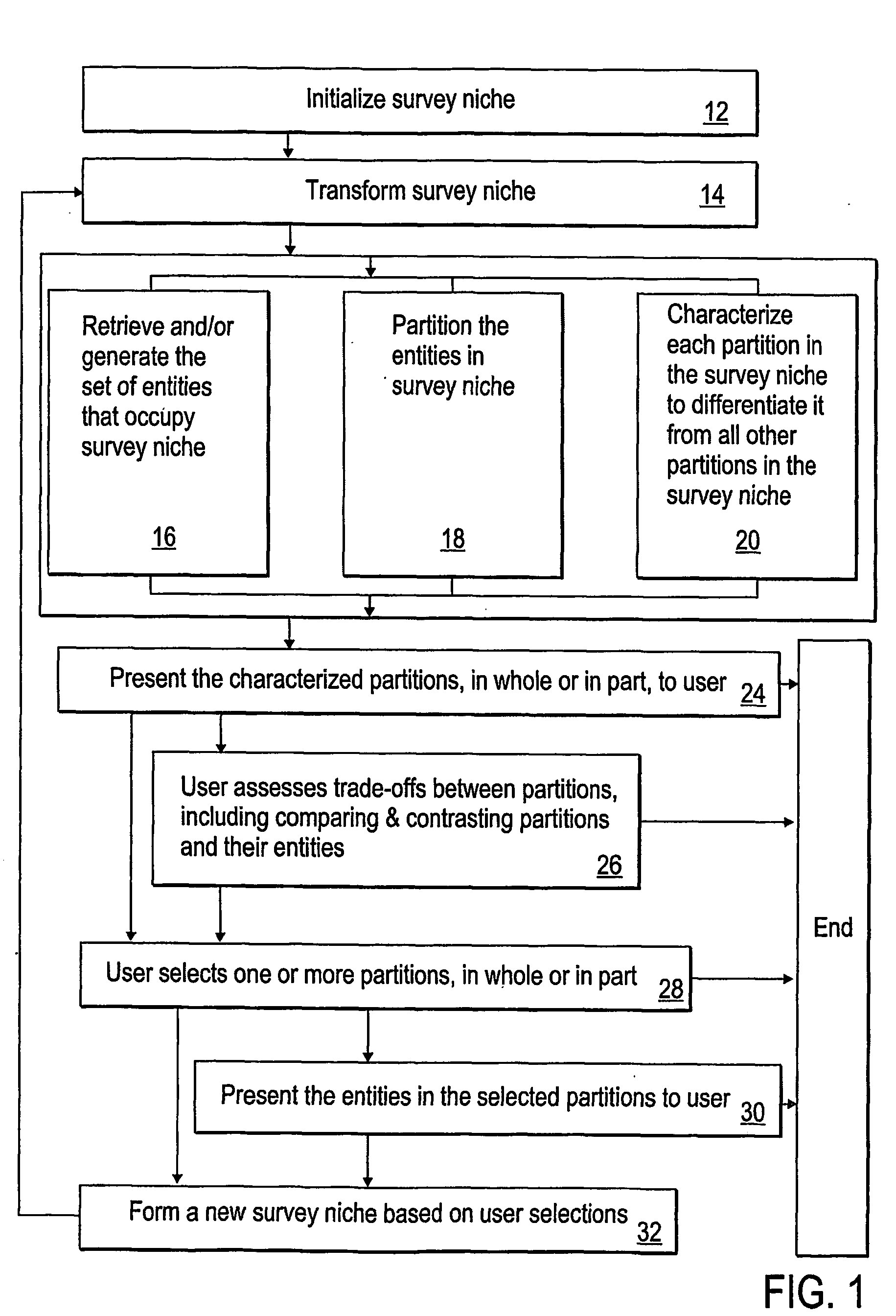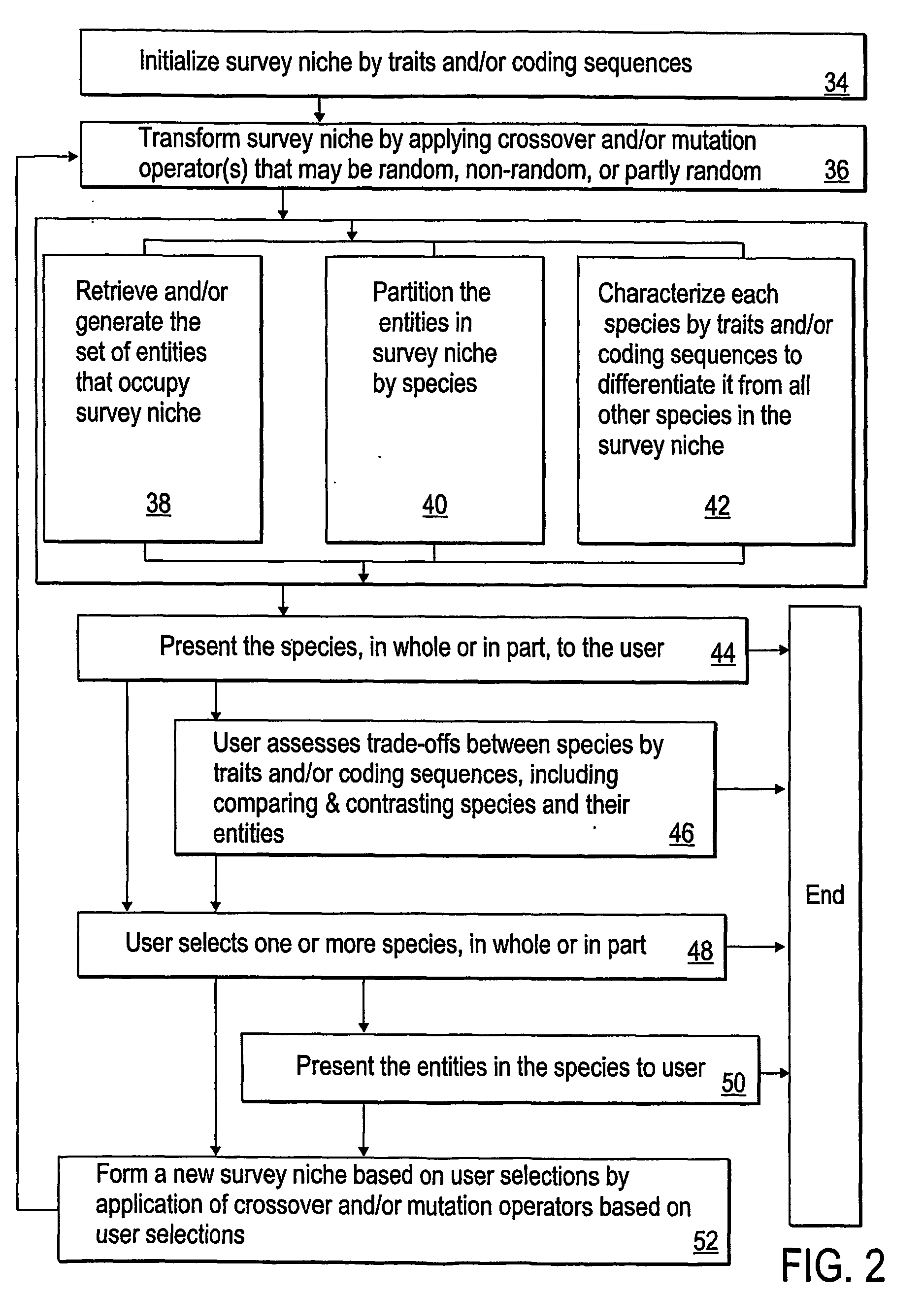Method and apparatus for information surveying
a technology of information surveying and methods, applied in the field of accessing and exploiting information resources, can solve the problems of human inability to handle, less and less information, and worsening,
- Summary
- Abstract
- Description
- Claims
- Application Information
AI Technical Summary
Benefits of technology
Problems solved by technology
Method used
Image
Examples
example 1
Fact Table as Index
[0317]
SatisfiedPredicateEvidence key6_cyl(x)101231013511222384238_cyl(x)20728207297029163225897248972542895FWD(x)1012311222RWD(x)207282072970291632251013538423897248972542895Sunroof(x)10123632251013511222384238972542895
example 2
Maximal Satisfiable Fact Table as Index
[0318] In the second example, the maximal satisfiable survey lattice elements have been formed and are used to form a condensed fact table, where maximal satisfiable survey lattice elements are used as points of evidence for the satisfiability of a predicate or its equivalent. It is used just as it is in the first example as regards the method of generating survey lattice elements. As in the first example, this same information may be stored in forms other than a table.
[0319] This structure may optionally be supplemented with a third column that provides the evidence keys for each maximal satisfiable survey lattice element. The supplemented table will have additional rows as well—one row for each evidence key belonging to a maximal satisfiable survey lattice element that includes a satisfied predicate.
MaximalsatisfiableSatisfiedsurvey latticePredicateelement ID6_cyl(x)138_cyl(x)2FWD(x)1RWD(x)23Sunroof(x)123
[0320] In both of these examples, ...
example 3
Indexing Range, Set, and Abstract Predicates for Survey Lattices
[0322] For this example we shift to a different data set, as seen below, capturing automobile performance data on fuel economy and acceleration.
Entity_keyEPA_City0-60 MPH3092525MPG8.4sec44942209.5449734012.755525186.964312144.2787943210.787463187.292726177.492727166.3
[0323] While it is possible to create single value predicates to represent this data, for this example we instead form the following set of range value predicates and abbreviate them as indicated. [0324] 10 mpg[0325] 15 mpg[0326] 20 mpg[0327] 25 mpg[0328] 30 mpg[0329] 3 sec[0330] 5 sec[0331] 7 sec[0332] 10 sec
[0333] Next, we derive the fact table for these entities and their performance data based on this set of range predicates.
SatisfiedPredicateEntity_key10-15 MPG(x)6431215-20 MPG(x)449425552587463927269272720-25 MPG(x)3092525-30 MPG(x)30-40 MPG(x)4497378794 3-5to60(x)64312 5-7to60(x)5552592727 7-10to60(x)3092544942874639272610-15to60(x)4497378794
[03...
PUM
 Login to View More
Login to View More Abstract
Description
Claims
Application Information
 Login to View More
Login to View More - Generate Ideas
- Intellectual Property
- Life Sciences
- Materials
- Tech Scout
- Unparalleled Data Quality
- Higher Quality Content
- 60% Fewer Hallucinations
Browse by: Latest US Patents, China's latest patents, Technical Efficacy Thesaurus, Application Domain, Technology Topic, Popular Technical Reports.
© 2025 PatSnap. All rights reserved.Legal|Privacy policy|Modern Slavery Act Transparency Statement|Sitemap|About US| Contact US: help@patsnap.com



